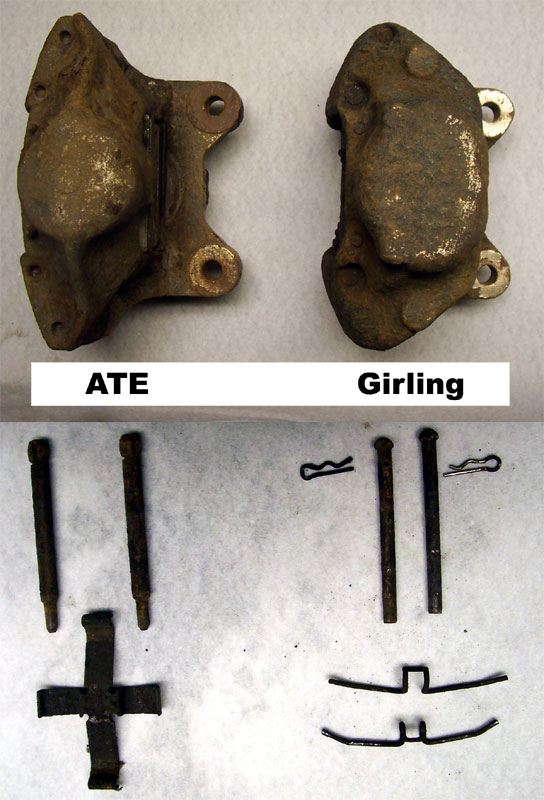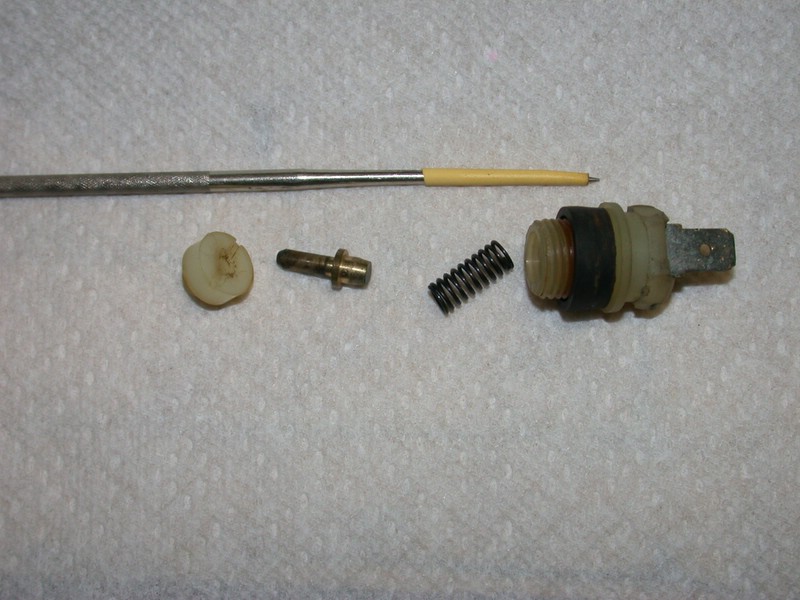Thank you cleanflametrap for the detailed pictures!
I've noticed whitish corrosion on the bleeder valves along with some rust in the fluid. Is it possible to unscrew the switch from the junction box with it still mounted to the car without disconnecting all of the other lines? I'd like to clean it up a bit before I bleed the system, but don't want to touch it if it involves disaster.[
QUOTE=cleanflametrap;4282143]I've found this switch is capable of giving false alarm. That is, you can get a light even though it hasn't sensed an imbalance between the two brake circuits; the shuttle is still centered.
Assuming you are getting the light without having to step on the brakes, here's how you might find out if the shuttle is stuck to one side, or a small fluid leak in the switch is the cause of the warning light.
1. Disconnect the D+ from the alternator (small red wire). This allows you to disable lamp test mode without having to run the motor.
2. With key in KP-II, have someone observe the failure light while you disconnect the spade from the octopus and provide a solid, clean ground to the wire. If an assistant is impossible, an ohmmeter will get you to the same place without the need to test the lamp brightness.
3. If the light is just as bright connected to the octopus as it is directly grounded, the shuttle will be found to be stuck to one side. This would tell me I need a new one, and the conversion to 91 is my choice -- just be aware the correct float reservoir was only used on 91 non-ABS cars, as was the 8-port plain manifold.
4. If the light is brighter directly grounded, then you may be able to fix this by merely removing the switch and cleaning the rusty brake fluid from the cavity.
Note. When you remove the nylon switch body, the rust swollen first few threads in the block may make it a royal pita to re-install it. Chasing the threads with the flutes of an appropriately pitched tap will help.
Don't forget to reconnect the D+ wire as soon as you're done testing.
[/QUOTE]


 . Thank you for the above information and photos, they have been quite helpful. I am currently working through eliminating the brake failure light fault and have traced it back to the brake like j-box. There are no leaks but pulling it apart and testing it for functionality with a ohm meter, I get a closed circuit resulting in the light illuminating.
. Thank you for the above information and photos, they have been quite helpful. I am currently working through eliminating the brake failure light fault and have traced it back to the brake like j-box. There are no leaks but pulling it apart and testing it for functionality with a ohm meter, I get a closed circuit resulting in the light illuminating. 